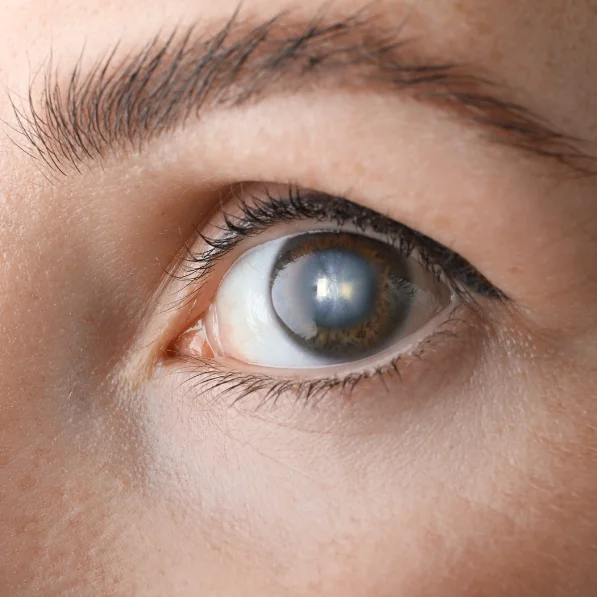REGISTRY SOFTWARE
Options
Discover the Core of Our Expertise
HealthCare Registries' Specialized Registries
Explore our unique collection of registries, each integral to enhancing eye care through advanced analytics and improved patient outcomes. Uncover how these targeted tools empower eye care professionals to deliver superior care and make informed decisions.

Diabetes Management Registry
This registry will enhance your care of diabetic patients by monitoring HbA1c change and predicting the advent of a retinopathy. Reports will help you build referrals from other physicians.

Learn More About this Registry
Problems
- Few eye care providers are following the AOA Guidelines for the management of patients with diabetes that have not yet developed retinopathy. The guidelines were developed after an exhaustive study of evidence-based literature. The guidelines recommend that eye care providers become active participants on the patient care team to help the patient reduce their risk of developing retinopathy
- Early activity of Healthcare Registries shows that when outcomes data is available, providers immediately adopt the approach in the guidelines as the way to improve their outcomes data
- Although broad consensus exists in the value of OCTA technology, the benefit to patients is being limited by low reimbursement rates and lack of data demonstrating the power of the technology<
- Data is needed to establish the relationship between OCTA findings and the time period to the development of visible retinopathy based on the level of the HbA1c and the level of diabetes control
- There is significant interest in evaluating if there is predictive value from OCTA microvasculature findings for the development of other systemic complications from diabetes such as neuropathy, skin ulcers, etc. Although data to evaluate these issues is available by combining eye care data with data from Health Information Exchanges (HIEs), there are currently no clinical analytics available to establish these relationships
- Data is needed to present to payers to improve reimbursements
- There is no data available to track the effectiveness in creating referrals through the adoption of this approach for either the ophthalmology office at the core of a referral network or for the optometry offices that makes up the rest of the eye care network.
Purpose
- To provide data that guides a population management approach to managing diabetes.
- To provide data that helps providers better understand the risk of the patient developing diabetic retinopathy.
- To provide practitioner with Diabeties data to share with PCPs.
Goals
- To provide data for practitioners to be able to monitor the change in HbA1c over time.
- To provide comparison data so that providers can evaluate their outcomes against other providers.
- To provide outcome-based data to help build referrals.
Cataract Extraction Registry
Evaluating outcomes from cataract surgery is a very complex issue that involves many different factors. The data from the cataract extraction registry is designed to give providers information on areas that they feel would help them improve the decision making process.

Learn More About this Registry
Problems
- Ophthalmologists who co-manage with Optometrists, often have difficulty getting the necessary post-op reports back from the referring optometrists. This results in a lack of data for the ophthalmologist to continue to improve their internal processes and may negatively affect their MIPS scores. The registry offers a solution to automate this process.
- There are a number of variations in cataract surgical techniques and IOL types. Any change in these variables can affect outcomes, but the true effect is difficult to appreciate through simple clinical observation. Data that tracks the results of these changes can help providers better understand the impact on outcomes of the changes that they implement.
- Data exists that indicates Covid may have had a negative impact on some patients who were ideal candidates for specialty IOLs. A national effort to make Social Determinants of Health (SDOH) data available for analytics raises the question whether data could help providers overcome some of the factors that affect the patient’s decision. A discussion of IOL options with patients who are in the early stages of cataract development, could potentially result in the selection of a different IOL than the one selected at the time of the pre-surgical discussion.
Purpose
- Create an alternate data solution to ensure that post-op reports are generated, sent and received for all co-managed surgeries
- Provide clinical outcomes data to help surgeons continue to improve their surgical results for all aspects of cataract surgery
- Create analytics to assess the effect on specialty lens selection based on when the discussion with the patient begins
Goals
- Provide analytics that support co-managed MIPS reporting as well as the individual quality improvement efforts that providers conduct
- Provide a temporary data solution to reporting post-op reports that is largely automated until the EHRs are able to implement an efficient electronic communications solution
- Provide an analytical tracking solution for providers that want to evaluate different ways of introducing the information patients need to decide which implant they will select
Dry Eye Registry
This registry will guide you in prescribing the most effective treatment modalities for specific types of dry eye patients. In addition to helping you reduce attrition, you can use the registry to demonstrate to PCPs the need to refer patient with dry eye symptoms.

Learn More About this Registry
Problems
- Dry eye treatments by eye care providers tend to be arbitrary or at the whim of the provider.
- Eye care providers, with no consideration of meibomian gland dropout, tend to treat patients presenting with dry eye symptoms with OTC lubricants.
- Primary Care Physicians have no way to compare their dry eye treatment results with those of other providers.
- Most providers have no idea as to attrition rate of their dry eye patients
Purpose
- Define the most effective treatment modalities for specific types of dry eye patients.
- Create data that demonstrates to primary care physicians the need to refer patients with dry eye symptoms.
- Provide comparison dry eye treatment data with other providers
- Provide appropriate attrition data on dry eye patients
Goals
- To provide registry users with better guidance as to which treatments work most effectively for each population of dry eye patients.
- To provide registry users with access to data to help educate primary care physicians and build referrals for dry eye patients.
- To provide registry users with access to data that allows them to see how their dry eye treatment results compare to other providers
- To provide registry users with access to data to help reduce attrition of dry eye patients
Myopia Registry
Data driven reports from this registry, will guide you in prescribing the most efficacious modality of myopia management for each individual patient. You can also use this data as a tool to educate your patients, parents, educators and to market your practice.

Learn More About this Registry
Problems
- Providers do not have data as to the prevalence and degree of myopia in their patient population. They currently rely on Asian populations studies which were done in Asia.
- Providers do not have a method of comparing the age of myopia onset and rate of myopia progression in their practice as compared to other practices.
- Providers do not have local community data to educate their patients and educators.
- Providers do not have data to compare the effectiveness of the various treatment options.
Purpose
- To provide practitioners with the data as to the prevalence and degree of myopia of patients in their practice.
- To provide practitioners with the data as to efficacy of various modalities on slowing the progression of axial elongation.
- To provide feedback on the treatment and referrals related to myopia education.
Goals
- To use outcome-based data to prescribe the most efficacious modality of myopia management for each patient.
- To use data from a practitioner’s EHR to compare their outcomes to other practitioners.
- To provide treatment data to providers to be used to educate patients, parents, teachers and educators. To make them aware that the decisions they make may impact the risk of a child developing of myopia.
Registries Under Construction
These new tools are being crafted to further advance eye care analytics and patient outcomes. Stay tuned for cutting-edge solutions that will soon join our suite of specialized registries.

